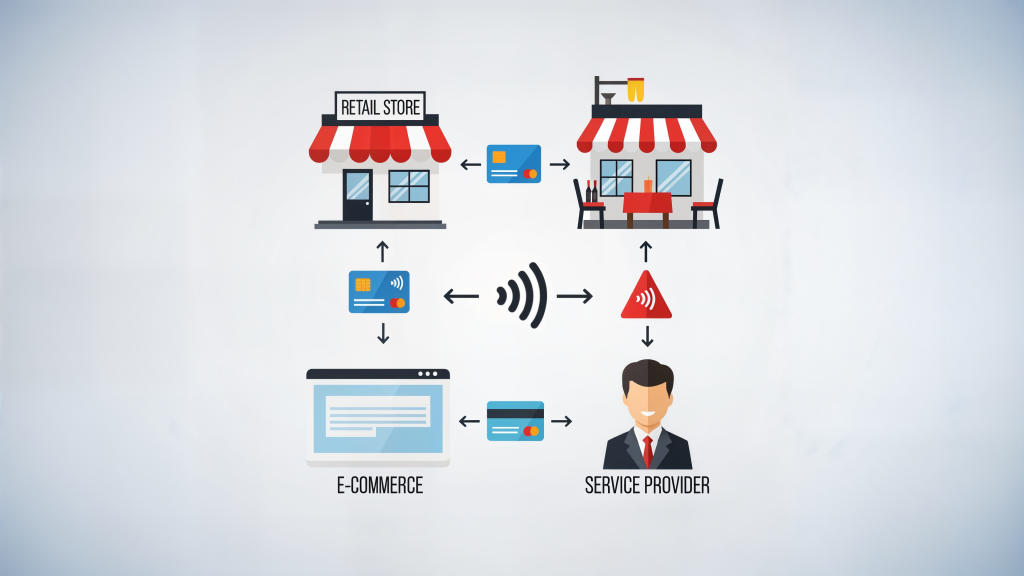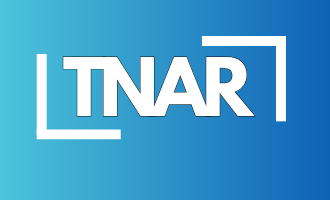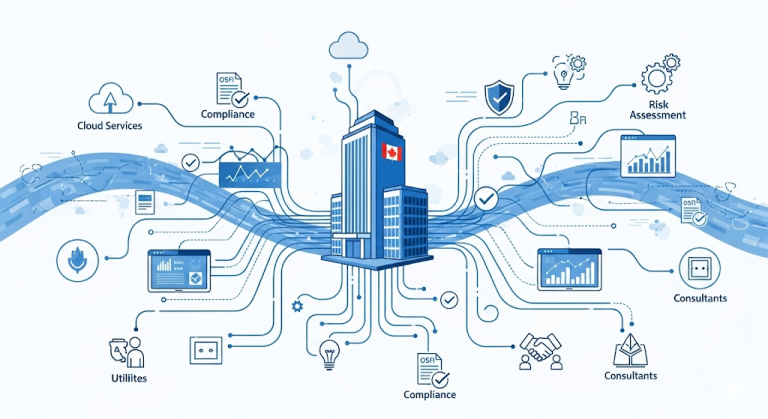According to Verizon’s 2024 Payment Security Report, the compliance control gap—the difference between measured compliance and 100% compliance—increased to 4.5% in 2023, up from 3.2% the previous year. Meanwhile, PCI DSS fines can range from $5,000 to $100,000 per month until issues are resolved, yet most small business owners still can’t explain what PCI DSS actually requires.
This growing compliance gap represents a dangerous trend for businesses accepting credit card payments. Every day, thousands of companies risk substantial financial penalties, customer trust erosion, and potential business closure—all because they lack a clear understanding of PCI DSS compliance fundamentals.
If you’re a business owner, compliance manager, or IT professional struggling to decode PCI requirements, this PCI DSS compliance guide will transform your understanding. You’ll learn exactly what PCI DSS compliance means, discover which requirements apply to your business, and receive a practical implementation roadmap that saves time and money.
By the end of this article, you’ll possess the knowledge to assess your current compliance status, understand the true costs involved, and take immediate action to protect your business from costly violations. Most importantly, you’ll gain confidence in navigating PCI DSS compliance without overwhelming complexity or unnecessary expenses.
The Payment Card Industry Data Security Standard affects every business accepting electronic payments, regardless of size or transaction volume. Let’s eliminate the confusion and build your compliance strategy step by step.
What is PCI DSS Compliance? (The Simple Definition)

PCI DSS compliance refers to adherence with the Payment Card Industry Data Security Standard—a set of security requirements designed to protect credit card data during storage, processing, and transmission. Think of it as mandatory security rules for handling customers’ credit card information safely.
The Payment Card Industry Security Standards Council created these standards in 2006 after major credit card companies—Visa, Mastercard, American Express, Discover, and JCB—recognized the need for unified security protocols. Prior to PCI DSS, each card brand maintained separate security requirements, creating confusion and inconsistent protection levels.
PCI DSS exists for one primary purpose: preventing credit card fraud and data breaches that cost businesses and consumers billions annually. When properly implemented, these standards create multiple security layers that make cardholder data extremely difficult for criminals to access or exploit.
The standard applies to any organization that stores, processes, transmits, or impacts the security of cardholder data. This includes merchants of all sizes, payment processors, acquirers, and service providers involved in payment card transactions.
Key outcomes of PCI DSS compliance include enhanced data security, reduced fraud risk, improved customer trust, and protection from regulatory penalties. Many businesses discover that PCI compliance also strengthens their overall cybersecurity posture beyond payment processing.
Who Needs PCI DSS Compliance? (Does Your Business Qualify?)

Any business accepting credit or debit card payments must comply with PCI DSS requirements, regardless of transaction volume or business size. This universal requirement often surprises small business owners who assume compliance only affects large corporations.
E-commerce and online retailers face comprehensive PCI DSS requirements because they handle card-not-present transactions, which carry higher fraud risks. These businesses must secure their websites, payment gateways, databases, and any systems storing customer payment information.
Brick-and-mortar retail businesses using point-of-sale systems, card readers, or terminals must comply with PCI standards. Even businesses processing a single credit card transaction annually fall under PCI jurisdiction.
Restaurants and hospitality businesses accepting credit cards for dining, room charges, or event payments must implement PCI security measures. This includes protecting both physical payment devices and any online reservation or ordering systems.
Service providers and contractors handling payment data on behalf of other businesses—such as payment processors, hosting companies, or IT service providers—face additional PCI responsibilities and often require higher compliance levels.
The PCI Security Standards Council divides businesses into four compliance levels based on annual transaction volumes:
Level 1: Over 6 million transactions annually
Level 2: 1-6 million transactions annually
Level 3: 20,000-1 million e-commerce transactions annually
Level 4: Under 20,000 e-commerce transactions or under 1 million total transactions annually
Most small and medium businesses fall into Level 4, which typically requires self-assessment questionnaires rather than expensive third-party audits. However, any business experiencing a data breach may be elevated to Level 1 requirements regardless of transaction volume.
Common misconceptions include believing that outsourcing payment processing eliminates PCI requirements, assuming small businesses are exempt, or thinking that annual assessments provide year-round protection. These misunderstandings often lead to compliance gaps and potential violations.
The 12 PCI DSS Requirements Every Beginner Must Know
The Payment Card Industry Data Security Standard consists of 12 core requirements organized into six control objectives. Understanding these requirements provides the foundation for effective compliance implementation.
Requirement 1: Install and maintain firewalls to protect cardholder data environments. Firewalls create barriers between trusted internal networks and untrusted external networks, blocking unauthorized access attempts and malicious traffic.
Requirement 2: Don’t use default passwords for systems, software, or security devices. Vendors typically ship products with standard passwords that hackers know and exploit. Changing these defaults immediately closes common security vulnerabilities.
Requirement 3: Protect stored cardholder data through encryption and secure storage methods. This requirement minimizes data storage, ensures proper encryption of necessary data, and establishes secure deletion procedures for outdated information.
Requirement 4: Encrypt data transmission across open, public networks. Credit card information must be protected during transmission using strong cryptography and secure protocols, preventing interception by unauthorized parties.
Requirement 5: Use anti-virus software and maintain current malware protection. Regular updates and scans protect systems from viruses, trojans, and other malicious software that could compromise cardholder data.
Requirement 6: Maintain secure systems through regular software updates, patches, and secure development practices. This requirement addresses vulnerabilities in applications, operating systems, and other software components.
Requirement 7: Restrict data access based on business need-to-know principles. Role-based access controls ensure that only authorized personnel can access cardholder data, limiting exposure and potential misuse.
Requirement 8: Assign unique user IDs and implement strong authentication measures. Each person accessing cardholder data must have individual credentials, enabling proper tracking and accountability for data access.
Requirement 9: Restrict physical access to cardholder data and payment processing systems. Physical security measures prevent unauthorized personnel from accessing servers, workstations, and payment devices.
Requirement 10: Track and monitor all access to network resources and cardholder data. Comprehensive logging creates audit trails that detect unauthorized access attempts and support incident investigation.
Requirement 11: Test security systems regularly through vulnerability scanning, penetration testing, and security assessments. Regular testing identifies weaknesses before criminals can exploit them.
Requirement 12: Maintain security policies that address information security for all personnel. Documented policies ensure consistent security practices and provide guidance for employees handling cardholder data.
According to the Verizon 2024 Payment Security Report, some requirements prove more challenging than others, particularly Requirement 11 (security testing), which remains a focus area in updated PCI DSS versions.
PCI DSS Compliance Levels Explained Simply (Which Level Are You?)
PCI compliance levels determine your assessment requirements, costs, and complexity based on annual credit card transaction volumes. Understanding your level helps plan appropriate compliance strategies and budget accordingly.
Level 4 businesses process fewer than 20,000 e-commerce transactions or fewer than 1 million total transactions annually. This category includes most small businesses, restaurants, retail shops, and service providers. Level 4 compliance typically requires completing a Self-Assessment Questionnaire (SAQ) and annual network vulnerability scans.
Level 3 businesses process 20,000 to 1 million e-commerce transactions annually. These mid-sized companies must complete SAQs, submit Attestations of Compliance, and undergo quarterly vulnerability scans by Approved Scanning Vendors.
Level 2 businesses process 1 to 6 million transactions per year. Requirements include annual SAQs, Attestations of Compliance signed by executives, and quarterly vulnerability scans. Some Level 2businesses may require on-site assessments.
Level 1 businesses process over 6 million transactions annually or have experienced previous data breaches. These organizations must undergo comprehensive on-site assessments by Qualified Security Assessors (QSAs), producing detailed Reports on Compliance.
Assessment requirements vary significantly between levels. Level 4 businesses often complete simple questionnaires independently, while Level 1 organizations invest substantial resources in professional assessments, documentation, and ongoing monitoring.
Compliance costs increase dramatically with higher levels. Level 4 businesses might spend under $1,000annually, while Level 1 organizations often invest tens of thousands in assessments, consulting, and specialized security tools.
Transaction volume thresholds apply per card brand, meaning businesses must track volume separately for Visa, Mastercard, American Express, and other cards. Exceeding thresholds for any single brand elevates your compliance level.
Breach escalation represents a critical consideration. Any business experiencing cardholder data compromise automatically moves to Level 1 requirements, regardless of transaction volume. This escalation dramatically increases compliance costs and complexity during already stressful breach response periods.
Many businesses discover they operate at higher levels than expected when properly accounting for all transaction types, including online sales, phone orders, and recurring payments. Regular volume monitoring prevents surprise level changes during annual assessments.
How Much Does PCI DSS Compliance Actually Cost? (2025 Budget Guide)
PCI compliance costs vary significantly based on business size, compliance level, current security infrastructure, and chosen implementation approach. Understanding realistic cost expectations helps businesses budget appropriately and avoid expensive surprises.
Level 4 businesses typically spendunder $1,000 annuallyfor basic compliance requirements. This includes Self-Assessment Questionnaire completion, vulnerability scanning services, and basic security tools. Many small businesses achieve compliance for $300-$500 per year.
Level 3 businesses generally invest $2,000-$5,000 annually in compliance activities. Additional costs include more comprehensive vulnerability scanning, enhanced documentation requirements, and potentially some consulting support for complex questionnaires.
Level 2 businesses often spend $5,000-$15,000 yearly on compliance programs. These organizations typically require professional guidance, more sophisticated security tools, and enhanced monitoring systems to meet increased requirements.
Level 1 businesses face the highest compliance costs, often exceeding $25,000-$100,000 annually. Mandatory on-site assessments by Qualified Security Assessors, comprehensive documentation, advanced security tools, and ongoing monitoring drive these higher expenses.
Initial setup costs frequently exceed ongoing maintenance expenses. New compliance programs might require security infrastructure upgrades, staff training, policy development, and system configurations that create substantial upfront investments.
Non-compliance penalties pose significant financial risks. According toindustry reports, PCI fines range from $5,000 to $100,000 per month until issues are resolved. Payment processors may also impose additional fees, increase transaction costs, or terminate merchant accounts.
Technology investments represent major cost components. Businesses often purchase new point-of-sale systems, security software, network monitoring tools, encryption solutions, and backup systems to meet PCI requirements.
Professional services costs include consulting fees, assessment expenses, training programs, and ongoing support. Many businesses benefit from professional guidance during initial implementation, even if they maintain compliance independently afterward.
Cost reduction strategies help businesses achieve compliance affordably. Choosing compliant payment processors, minimizing cardholder data storage, implementing network segmentation, and leveraging cloud-based solutions often reduce both initial and ongoing expenses.
Return on investment extends beyond compliance requirements. Many businesses discover that PCI security measures prevent costly data breaches, improve overall cybersecurity, enhance customer trust, and streamline payment operations.
Step-by-Step PCI Compliance Implementation for Beginners
Successful PCI compliance implementation requires systematic planning, proper resource allocation, and methodical execution. This proven framework helps businesses achieve compliance efficiently while minimizing costs and disruption.
Step 1: Determine your compliance level and scope. Calculate annual transaction volumes for each card brand to establish your PCI level. Document all systems, processes, and personnel that handle cardholder data. This scoping exercise defines your compliance boundary and assessment requirements.
Step 2: Complete a gap assessment of current security measures. Evaluate existing security controls against PCI requirements using the appropriate Self-Assessment Questionnaire or professionalassessment. Identify missing controls, inadequate implementations, and areas requiring immediate attention.
Step 3: Choose compliant payment processing solutions. Select payment processors, gateways, and point-of-sale systems that maintain PCI compliance and offer security features reducing your compliance scope. Many modern solutions handle PCI requirements transparently, simplifying your obligations.
Step 4: Implement the 12 PCI DSS compliance requirements systematically. Prioritize critical security gaps while building comprehensive controls addressing all requirements. Focus on network security, access controls, monitoring systems, and data protection measures that provide immediate risk reduction.
Step 5: Document policies and train your team. Develop written security policies addressing PCI DSS Compliance requirements and train all personnel handling cardholder data. Regular training ensures consistent security practices and helps maintain compliance over time.
Step 6: Complete self-assessment questionnaire (SAQ). Choose the appropriate SAQ based on your payment processing methods and business model. Answer all questions honestly, providing evidence for positive responses and remediation plans for negative answers.
Step 7: Submit compliance documentation. Prepare and submit required documents including completed SAQs, Attestations of Compliance, and vulnerability scan reports. Maintain organized records supporting your compliance assertions.
Step 8: Maintain ongoing compliance monitoring. Establish procedures for regular security assessments, vulnerability scanning, policy updates, and staff training. PCI DSS compliance requires continuous attention, not just annual certification.
Implementation timeline typically ranges from 30-90 days for most small businesses, depending on existing security infrastructure and resource availability. Complex environments or significant security gaps may require longer implementation periods.
Resource allocation should include dedicated project management, technical implementation support, and ongoing maintenance responsibilities. Many businesses assign compliance coordination to existing IT or operations personnel while engaging consultants for specialized technical implementation.
Common implementation challenges include underestimating scope complexity, inadequate resource allocation, resistance to process changes, and difficulty maintaining compliance after initial certification. Proper planning and executive support help overcome these obstacles.
Success metrics extend beyond compliance certification to include reduced security incidents, improved operational efficiency, enhanced customer confidence, and streamlined audit processes. These broader benefits justify compliance investments and encourage ongoing security improvements.
Common PCI Compliance Mistakes Small Businesses Make (And How to Avoid them)
Learning from others’ compliance failures helps businesses avoid costly mistakes and achieve sustainable PCI DSS compliance. These common errors represent the most frequent compliance gaps discovered during assessments and breach investigations.
Storing credit card data unnecessarily represents the most dangerous rookie mistake. Many businesses retain complete card numbers, expiration dates, or security codes without legitimate business needs. This practice dramatically increases PCI scope, compliance costs, and breach risks while providing minimal business value.
Using default passwords on payment systems creates easily exploitable vulnerabilities. Hackers maintain databases of vendor default credentials, making these systems prime targets. Changing default passwords immediately and implementing strong password policies provides essential protection.
Neglecting software updates and security patches leaves systems vulnerable to known exploits. Criminals actively target unpatched systems using publicly available vulnerability information. Establishing regular update procedures and emergency patching protocols prevents many successful attacks.
Poor employee training on data handling leads to inadvertent policy violations and security incidents. Staff members who don’t understand PCI DSS compliance requirements may store data inappropriately, share credentials, or fall victim to social engineering attacks.
Inadequate documentation of security policies creates compliance gaps and operational inconsistencies. Many businesses implement security controls without proper documentation, making assessment difficult and maintenance problematic. Written policies ensure consistent implementation and provide guidance during staff changes.
Choosing non-compliant payment processors can invalidate compliance efforts and create unexpected liabilities. Some processors claim PCI DSS compliance while failing to meet all requirements or provide adequate security features. Verifying processor compliance and understanding shared responsibilities prevents nasty surprises.
Ignoring physical security of payment devices allows unauthorized access to sensitive systems. Unsecured point-of-sale terminals, computers processing payments, or servers storing cardholder data represent significant vulnerabilities that criminals can exploit through direct access.
Forgetting annual re-certification requirements leads to compliance lapses and potential penalties’ compliance requires ongoing validation, not one-time certification. Establishing calendar reminders and compliance monitoring procedures ensures continuous adherence to requirements.
Scope creep without proper assessment occurs when businesses add new payment processing methods, systems, or locations without evaluating PCI implications. Each change potentially affects compliance scope and requirements, necessitating updated assessments and control implementations.
Over-complicating simple requirements wastes resources and creates unnecessary complexity. Some businesses implement expensive, sophisticated solutions when simpler approaches would satisfy PCI requirements effectively. Understanding proportional responses to compliance requirements optimize cost-effectiveness.
Prevention strategies include regular compliance training, documented procedures, periodic internal assessments, professional guidance during major changes, and ongoing monitoring of security controls. These proactive measures identify issues before they become compliance violations or security incidents.
Best PCI Compliance Tools and Solutions for Small Businesses (2025)

Selecting appropriate tools and solutions significantly impacts PCI DSS compliance costs, complexity, and effectiveness. Modern technology offers small businesses affordable options that simplify compliance while providing robust security features.
Compliant payment processors form the foundation of effective PCI strategies. Square offers integrated point-of-sale systems with built-in compliance features, transparent pricing, and extensive small business support. Stripe provides developer-friendly payment processing with strong security controls and flexible integration options. PayPal delivers familiar payment solutions with comprehensive fraud protection and simplified compliance requirements.
Point-of-sale systems with built-in PCI compliance reduce complexity and costs for retail businesses. Modern POS solutions encrypt transactions automatically, minimize data storage, and provide regular security updates. Leading options include Square, Shopify POS, Toast (for restaurants), and Lightspeed, each offering industry-specific features and compliance support.
Security software for small business networks protects payment environments affordably. Bitdefender Gravity Zone provides enterprise-grade antivirus and threat detection for small businesses. SonicWALL offers network security appliances combining firewall, intrusion prevention, and content filtering. Cisco Umbrella delivers cloud-based DNS security protecting against malware and phishing attacks.
Document management tools for policy storage help organize compliance documentation securely. Microsoft 365 provides cloud-based document storage with security controls and collaboration features. Google Workspace offers similar capabilities with integrated security monitoring. Specialized GRC platforms like Secureframe or Vanta provide compliance-focused document management with automated tracking and reporting.
Employee training platforms and resources ensure staff understand PCI requirements. The PCI Security Standards Council offers free awareness training covering basic requirements. KnowBe4 provides comprehensive security awareness training including PCI DSS compliance-specific modules. Many payment processors offer training resources tailored to their customers’ needs.
Assessment and monitoring tools support ongoing compliance validation. Nessus provides vulnerability scanning capabilities suitable for small businesses. Rapid7 offers managed vulnerability management services reducing internal resource requirements. Many cloud-based solutions provide continuous monitoring and automated reporting.
Key features to evaluate when choosing solutions include PCI compliance validation, automatic security updates, comprehensive logging capabilities, user access controls, encryption features, backup and recovery options, and vendor support quality. Understanding these criteria helps businesses select appropriate tools matching their specific requirements and budgets.
Free vs. paid tool recommendations depend on business complexity and resource availability. Many small businesses achieve basic compliance using free tools combined with affordable commercial solutions. However, businesses processing higher transaction volumes or operating complex environments often benefit from professional-grade tools providing enhanced security and management features.
Implementation consideration include staff training requirements, system integration complexity, ongoing maintenance needs, and vendor support availability. Choosing solutions that integrate well with existing systems and provide adequate support reduces implementation challenges and long-term operational complexity.
Conclusion: Your Next Steps to PCI DSS Compliance
PCI DSS compliance protects your business from costly fines, customer trust erosion, and potential closure while creating a foundation for comprehensive cybersecurity. Understanding the 12 core requirements, determining your compliance level, and implementing systematic security controls transforms compliance from overwhelming obligation into manageable business process.
The key takeaways for successful PCI DSS compliance include choosing your compliance level based on transaction volumes, implementing the 12 requirements systematically, investing in appropriate tools and training, and maintaining ongoing monitoring and assessment. Most small businesses can achieve Level 4compliance for under $1,000 annually while gaining significant security improvements.
Cost-effective compliance strategies focus on selecting compliant payment processors, minimizing cardholder data storage, implementing appropriate security tools, and maintaining comprehensive documentation. These approaches reduce both initial implementation costs and ongoing maintenance expenses while providing robust protection.
Your immediate action items should include calculating your annual transaction volumes to determine compliance level, conducting a gap assessment using the appropriate Self-Assessment Questionnaire, identifying compliant payment processing solutions, and developing an implementation timeline with specific milestones and resource assignments.
The compliance landscape continues evolving with new threats, updated requirements, and enhanced validation procedures. Staying informed about PCI DSS compliance changes, maintaining current security practices, and regularly assessing your compliance posture ensures long-term protection and business continuity.
For businesses requiring additional guidance or facing complex compliance challenges, consider consulting with qualified security professionals who can provide tailored recommendations and implementation support. Professional guidance often accelerates compliance timelines while ensuring comprehensive protection and cost optimization.
This article provides general guidance on PCI DSS compliance requirements. Specific compliance obligations may vary based on your business model, payment processing methods, and card brand requirements. Consult with qualified security professionals for detailed compliance assessments and implementation guidance.






